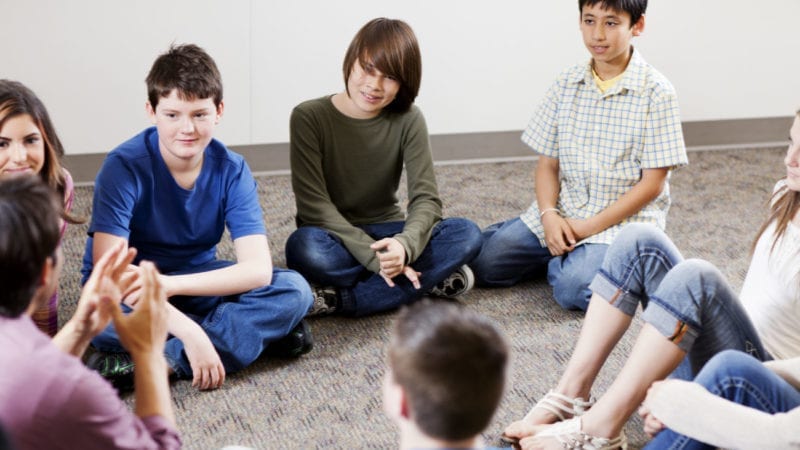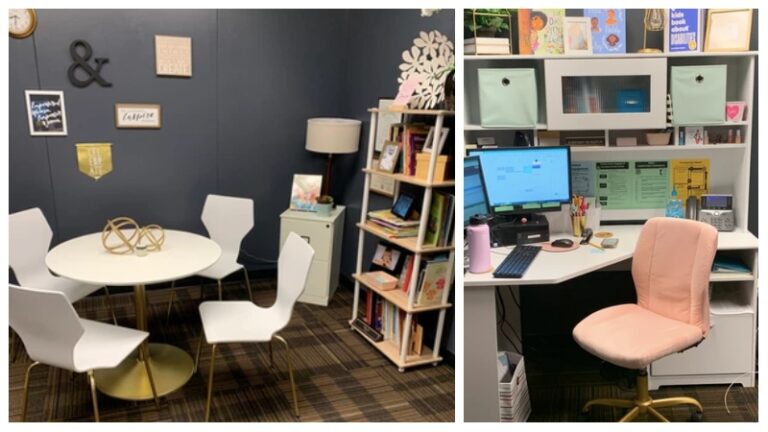You’ve been thinking about restorative practice ever since you heard about it. You want discipline in your school to be proactive rather than reactive, so you aren’t always putting out fires. You want fewer conflicts and problems in the first place. Here’s some concrete evidence to support restorative practice and a couple of ways to try it now.
Punishing v. Restoring
Adapted from Restorative Justice models in the justice system, restorative practice aims to help people restore what they’ve hurt instead of being sent away and isolated from it. After many discussions with my leadership team and reading the guest post by school psychologist Julie Gordon Buccitti at The Corner on Character blog, I really connected with the idea of moving from students being in trouble to walking our students through trouble so that discipline isn’t something we do to students, but with them. So often, errant behaviors are just a non-verbal way of communicating and trying to belong, so why not proactively teach a more positive way to resolve their conflicts? Restorative circles also make sense not only as an extension of morning meeting, but as a way to bond, eye-to-eye, shoulder-to-shoulder, knee-to-knee while we model, teach, and practice our verbal and non-verbal soft skills.
Modeling Matters
Leading by example is a strong way to get join in from staff when trying something new, so consider introducing the concept of restorative circles to your staff using the circular cards in the award-winning game of visual perceptions and connections called Spot It! In this popular game, players show their cards to one another in an attempt attempt to be the first person to find the matching picture on their circle. Give all school staff members a Spot It! card and invite them to engage in an inner/outer circle activity to model the importance of belonging, of being a part of that inner circle.
The Inner Circle
Because belonging is identified as essential in Maslow’s Hierarchy of Needs after basic physiological and security needs, the inner circle will represent belonging. After distributing the cards, ask staff members to place themselves in two circles, the inner circle facing out and the outer circle facing in so that each person is facing a partner. To facilitate the process, use the mantra restorative circles as they count themselves off by two; teachers who said restorative will start in the inner circle facing out; teachers with the word circles will start on the outside looking in. Make it clear that it’s not where you started, but where you’re going that matters. The objective of this activity will be to end up in the inner circle. When the leader rings a bell or plays music to start, each pair turns their Spot It! card face up and participants work to be the first to find the one picture image that connects the two cards. The person to find it first points out what it is and earns a spot in the inner circle. Rotate the circle cards or pass the cards in order to play several rounds and keep it fresh; encourage participants to focus on what they’re feeling as they try to get that coveted spot on the inside. Experiencing restorative practice helps teachers feel the difference.
Reflections To Grow
After several riveting rounds of Spot It!, circle up to reflect. What was the experience to fight for a spot in the inner circle like? Did you like being on the inside? How did it feel to be on the outside? Is it easy to find something in common? Like in the game, does it have to go fast in real life? Or might you still be finding new commonalities with staff members whom you’ve known for years? How might this activity help the students in your learning space this year?
Try this now!
How could unleashing the power of the circle help strengthen your classroom connections and climate? How might that decrease office referrals to keep your learners where they belong?

Join our Facebook group Principal Life for more ideas on how to transform your school.

